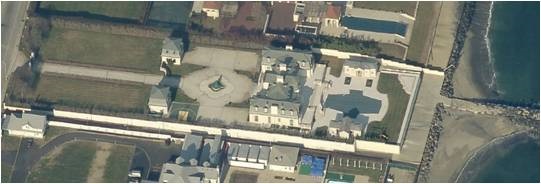No Relief for Castle on the Sand
In this appeal challenging the assessment of an 8,772 sf residence on nearly 2 acres overlooking the Atlantic Ocean with 8 bedrooms, 6 full and 2 half baths, solarium, salon, billiard room, exercise room, limestone patios, a pool and two pool houses, the New Jersey Tax Court found that the owner lacked one thing: credible proofs to reduce the $8.1 million assessment.
Plaintiff’s appraiser in Bell Mer REC v. City of Long Branch valued the property at $6.5 million relying solely on the sales comparison approach. While the court found that the plaintiff’s appraiser presented enough evidence to overcome the defendant’s motion to dismiss for failure to overcome the presumption of correctness of the assessment, it was not persuaded by plaintiff’s proofs to reduce the assessment. Mindful of its obligation to find true value, the court, relying on Greenblatt v. City of Englewood, 26 N.J. Tax 41 (Tax 2010) concluded that the “record is void of sufficient and competent evidence from which [it could] base a determination of true value.”
A copy of this unreported decision may be found here.
The court was critical of plaintiff for failing to consider certain sales both within the Elberon section of the City of Long Branch where the subject is located, as well as sales in neighboring municipalities all of which occurred after the October 1, 2011 assessing date. The first sale was located in the City’s Elberon neighborhood and closed in November 2011. Upon being asked about this sale, plaintiff’s appraiser claimed that he was not aware of it at the time he prepared his report, which the court did not find credible noting that his report was prepared more than one year after that sale closed.
The court also indicated that consideration of two other sales in neighboring communities, deemed comparable to the Elberon section of Long Branch, would have been reasonable. One involved a larger lot and home in Deal that sold in December 2011 for $22.6 million. The other sale was in Allenhurst and occurred in May 2013, more than twenty months after the October 1, 2011 assessing date. The court’s opinion does not provide any particulars regarding the Allenhurst property or the amount paid, but did state that “[p]laintiff’s expert cannot credibly claim that a 2013 sale in a township which is concededly comparable market-wise to the Elberon Section, is unreliable as being beyond the assessment date when he used sales in the 2008, 2009 and 2010 as comparables.”
The court also rejected the adjustments for lot size which plaintiff’s appraiser based on his theory called “4:3:2:1” which the court concluded was just that, a theory, and was not based on or supported by market information.
The court’s reference to and reliance upon the post assessing date sales is interesting; especially the May 2013 sale. The court has held that post-assessing date events are not probative of true value unless they corroborate facts in existence on the assessing date or unless such events are reasonably foreseeable on that date. It is unclear how the May 2013 sale was reasonably foreseeable as of October 1, 2011. Moreover, it is unclear what, if any, facts in existence as of the assessing date were corroborated by the post assessing date sales data. Of course, none of this really matters if the plaintiff failed to provide competent proofs upon which the court could render a decision reducing the assessment. But, it bears watching whether the court will soften its position with regard to post assessing date data, particularly when that is the only credible data available for a particular property in a particular tax year.
Related blog posts:
Limited sales data and lack of reasonable adjustments does not doom plaintiff’s appeal Comparable Sales From Neighboring Town Not Persuasive Evidence Taxpayer Fails to Overcome Presumption of CorrectnessAppraiser’s Subjective Adjustments Rejected; Owner Loses Appeal
Taxpayer Clears One Hurdle But Trips on Another
Expert’s Mistake Sinks Valuation Case







